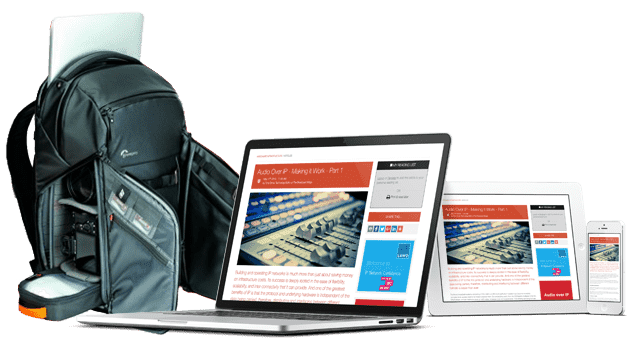A Practical Guide To RF In Broadcast: Part 3 - Planning, Tuning & Monitoring

This is the third of a multi-part series exploring the science and practical applications of RF technology in broadcast. Here we focus on things to consider when planning systems, how to tune transmitters and monitoring requirements.
About 'A Practical Guide To RF In Broadcast'
A Practical Guide To RF In Broadcast is a Themed Content Collection that will publish during 2023. The complete series of twelve articles provides an extensive technical guide to RF technology within broadcast. It is a major work that will serve as a reference resource for professional broadcast engineers.
Broadcasting has encountered more technology change over the past thirty years than many of us care to think about. Analog has changed to digital delivery, SD has changed to HD and 4K, and sound is transitioning to deliver higher levels of immersive experience through object and surround sound. But the one consistent technology that has stood the test of time is RF.
RF differs from most other broadcast technology as it’s fundamentally analog. As the laws of physics haven’t changed in the past hundred years, then the underlying rules that govern all RF systems haven’t changed either. But what has changed is how we use RF in the context of modern broadcasting along with our understanding of how waves propagate through the universe.
Broadcasting has always driven technology to its limits, and this is certainly the case with RF. Morse devised the first channel coding system ninety years before Shannon formalized his achievements through information theory. And this in turn led to the development of the highly efficient coding systems that we use in modern broadcasting such as CODFM and 5G-NS.
Our RF understanding is sure to improve for as long as users continue to use mobile devices.
A Practical Guide To RF In Broadcast is a collection of twelve articles presented in four parts.
Each part tackles a different theme and there are three or more articles per part.
Details of all four parts can be found
HERE.
About Part 3. Planning, Tuning & Monitoring
Part 3 is a free PDF download which contains three articles:
Article 1 : Transmitter Plant Planning
Broadcast transmitter facility planning, design and construction. What an engineering consultant can help with.
Article 2 : Tuning And Monitoring Transmitters
How to tune for legal &standards compliance and performance, during installation and daily operations.
Article 3 : RF System Monitoring
Our partner DekTec discuss the features and benefits of their new portable USB3 RF probe the DTU-331.
You might also like...
Microphones: Part 10 - Mid-Side (M-S) Recording And Processing
M-S techniques provide useful sound-field positioning and a convenient way to check mono compatibility. We explain the hard science behind this often misunderstood technique.
Microphones: Part 9 - The Science Of Stereo Capture & Reproduction
Here we look at the science of using a matched pair of microphones positioned as a coincident pair to capture stereo sound images.
Microphones: Part 8 - Audio Vectorscopes
The audio vectorscope is an excellent tool for assuring quality in stereo sound production, because it makes the virtual sound image visible in the same way that a television vectorscope allows the color signals to be seen.
Microphones: Part 7 - Microphones For Stereophony
Once the basic requirements for reproducing sound were in place, the most significant next step was to reproduce to some extent the spatial attributes of sound. Stereophony, using two channels, was the first successful system.
Microphones: Part 6 - Omnidirectional Response In Practice
Having looked at how microphones are supposed to work, here we see that what happens in practice isn’t quite the same because the ideal and the actual are somewhat different.








